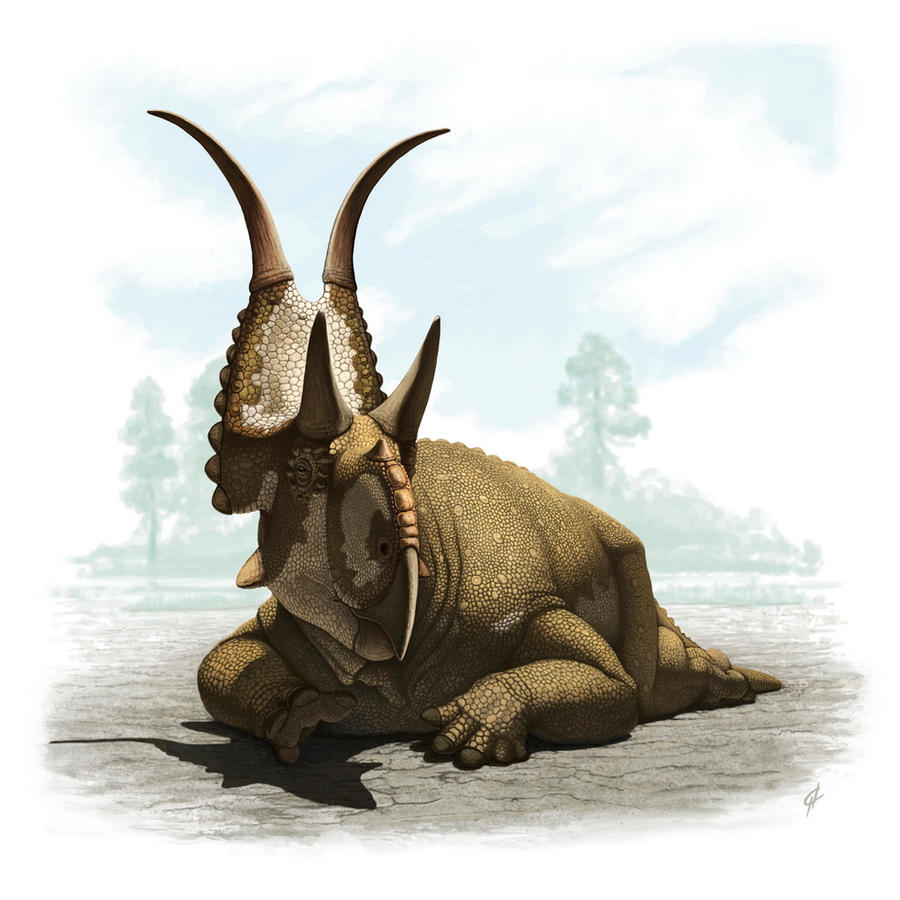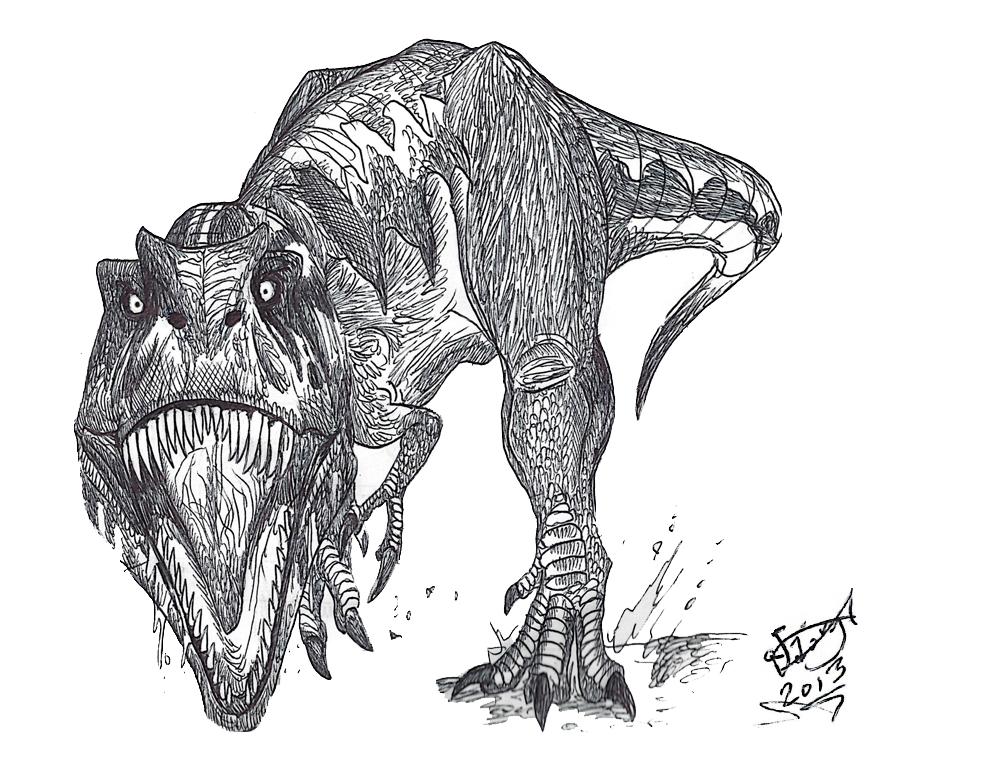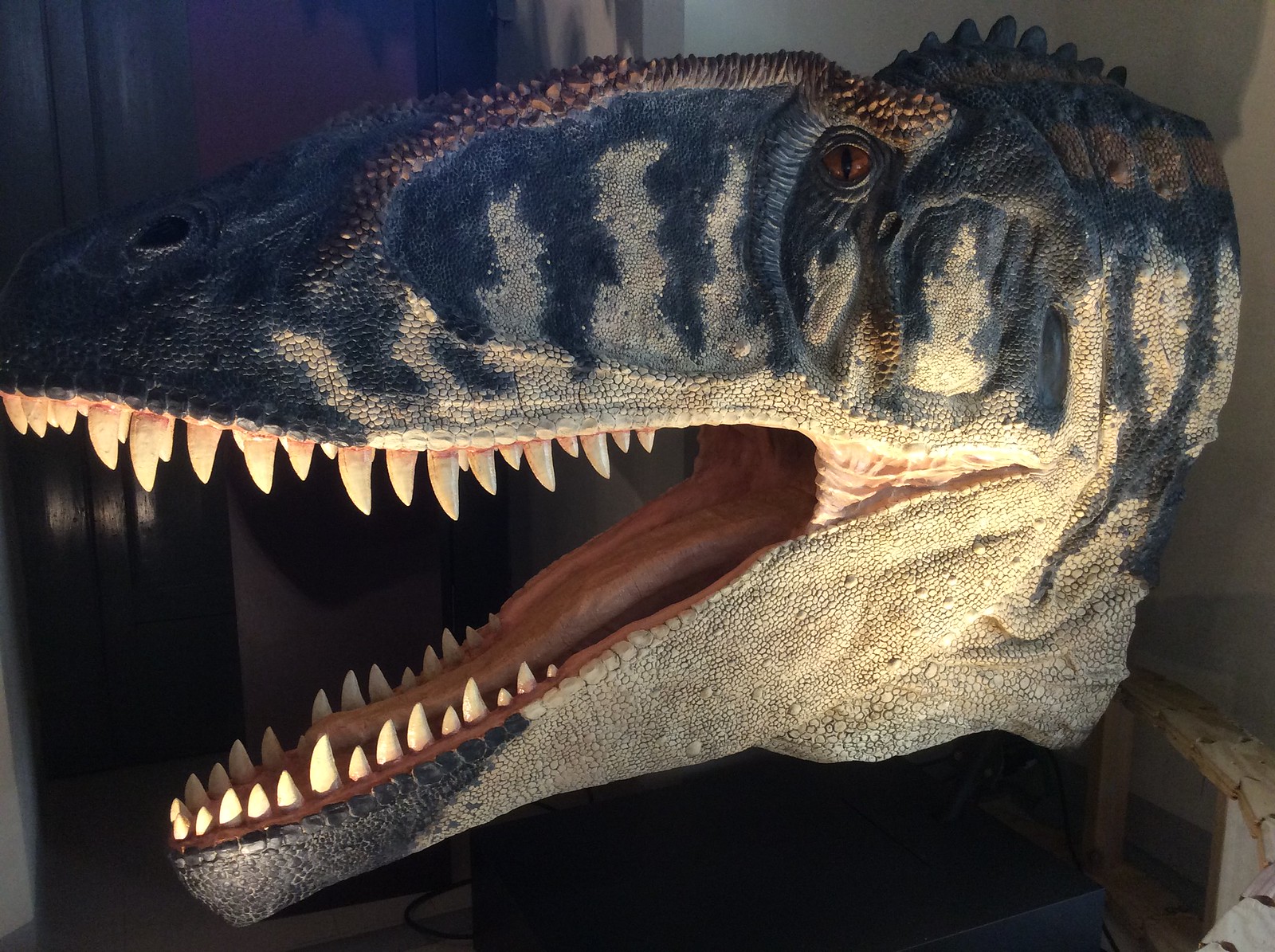Post by Carcharodon on Feb 1, 2014 5:59:56 GMT 5
Diabloceratops is an extinct genus of centrosaurine ceratopsian dinosaur that lived approximately 79 million years ago during the latter part of the Cretaceous Period in what is now Utah, in the United States. Diabloceratops was a medium sized, moderately-built, ground-dwelling, quadrupedal herbivore, that could grow up to an estimated 5.5 m (18.0 ft) long. Diabloceratops is paleontologically significant because, at the time of its discovery, it was the oldest known ceratopsid, and first centrosaurine known from latitudes south of Montana. Diabloceratops was built like a typical ceratopsian in that it had a large neck frill made of bone. It had a small horn on the nose, perhaps a second horn in front of that, and a pair of relatively small horns above the eyes. The skull is deeper and shorter than that of any other centrosaurines. Upon the frill it also had a pair of very long spikes as in Einiosaurus and Styracosaurus. It being one of the earliest centrosaurine ceratopsids, Kirkland noted a character Diabloceratops shared with the more "primitive" protoceratopsid forms. Both possess an accessory opening in the skull that would become much reduced or disappear in later, more advanced ceratopsids. Kirkland saw this as an indication that the earlier species were not together included in some single natural group but instead presented a gradual sequence of ever more derived forms, increasingly closer related to the Ceratopsidae.

Lythronax argestes
Lythronax ("king of gore", from Greek words lythron meaning "gore" and anax meaning "king") is an extinct genus of tyrannosaurid theropod dinosaur which lived around 80 million years ago in what is now southern Utah. L. argestes is the oldest known tyrannosaurid based on its stratigraphic position. Lythronax argestes is known from a partial skeleton and its diagnostic features include a reduced alveoli count in the maxilla, a concave lateral margin of the dentary, its tall cervical neural spine and a broad caudal portion of the skull. The holotype specimen consists of the right maxilla, both nasal bones, the right frontal, the left jugal, the left quadrate, the right laterosphenoid, the right palatine, the left dentary, the left splenial, the left surangular, the left prearticular, a dorsal rib, a caudal chevron, both pubic bones, the left tibia and fibula, and left metatarsals II and IV. Based on the assemblage, the fossils are considered to have come from one individual, which was an adult. Comparisons to its close relatives suggest that Lythronax would have been over 7 metres long, with a weight of more than 1 tonne, and had a large skull filled with sharp teeth. The rostrum is comparatively short, since it makes up less than two thirds of the total skull length. The whole skull is very broad, it's 0.4 times as wide as long. Overall, the skull is morphologically most similar to that of Tyrannosaurus and Tarbosaurus. Its robust maxilla possessed a heterodont dentition, as its first five teeth are a lot larger than the other six. Like other tyrannosaurids, Lythronax has large, distally expanded pubic boot which is approximately 60% the length of the pubic bone. The postcranial morphology is similar to that of other tyrannosaurids.







